[16+] Key Factors To Creating High-Converting Landing Pages
![[16+] Key Factors To Creating High-Converting Landing Pages](http://ecomposer.io/cdn/shop/articles/image36_d556409c-ae96-447f-ae87-cad185353947.webp?v=1756325102&width=1100)
Table Of Contents
A landing page works as a crucial first meeting where visitors need an outstanding introduction and a clear purpose to understand their next move. Contemporary web visitors possess a fleeting attention span during website browsing, so they will immediately leave any page if it fails to capture them at first glance.
In addition to being aesthetically pleasing, a high-converting landing page is a clever fusion of design, content, and user experience that directs users to a particular action. So, what separates a mediocre landing page from a conversion-driving landing page? In this blog, we’ll dive into [16+] Key Factors To Creating High-Converting Landing Pages. Let’s get started!
Why is a Landing Page Important?

(source: EComposer Spa Landing Template)
One crucial digital marketing technique that helps companies turn traffic into valuable outcomes is landing pages. Because a landing page's design is different from that of a homepage, its primary objective is to accomplish a single conversion goal.
So, why are landing pages essential for your business?
- Higher Conversion Rates: A well-designed landing page minimizes distractions and includes a clear call-to-action, increasing conversions and lowering acquisition costs.
- A/B Testing for Optimization: Allows businesses to test different headlines, visuals, and CTAs to determine what drives the best results.
- Lower Advertising Costs: Improves ad performance by increasing relevance, leading to a higher Quality Score and reduced cost per click on platforms like Google Ads.
- Targeted Messaging: Tailored content aligns with visitor intent, boosting engagement and trust whether they arrive from ads, emails, or social media.
- Lead Generation Powerhouse: Helps businesses collect valuable customer information through special offers, discounts, or free trials.
- Simplified Marketing & Tracking: Provides performance insights, audience data, and traffic sources to refine marketing strategies for better results.
Why do you need to optimize your Landing Page?
Online marketing tools deeply rely on landing pages because they deliver seamless navigation while enabling customization and providing a direct path to convert visitors. Optimizing landing pages remains essential for their proper performance, even though creating one is necessary.
A well-optimized landing page helps you achieve the highest possible conversion rate from your visitors right from the start. Studies show that an optimized landing page can drive 160% more conversions (like sign-ups and purchases) compared to less targeted tools such as pop-ups.

(image source: emailvendorselection.com)
But what happens if your page loads too slowly, your lead form asks for too much information, or your call-to-action (CTA) isn’t compelling enough? You lose potential customers, and every lost visitor is wasted marketing spend.
The landing page represents all your marketing activities because it serves as the final destination. All your past financial investments in PPC ads, social media advertising, and email marketing have successfully driven visitors to your webpage. Your landing page needs essential optimization to convert visitors because failing to convert leads will cost you both new prospects and higher acquisition expenses.
Top 16 Key Factors To Creating High Converting Landing Pages
Landing Page UX design
1. User-Friendly Layout and Design

Organized welcome elements must appear on the landing page because disorganized content leads visitors to become lost about where they should direct their attention. Simple page design coupled with purposeful elements guides users to perform actions on your call-to-action.
Key Principles of a User-Friendly Layout:
- All elements should exist with a definite function because simplicity rules as the central principle. Remove any element that fails to direct visitors toward your CTA since its purpose becomes unnecessary.
- Page organization should produce smooth transitions between sections that create growing interest and strengthen the CTA.
- The number of available links should stay low because many options prompt users to exit the website. Use simplified navigation, or do not show any navigation links at all.
- The arrangement of white spaces signifies how content should spread out naturally. Strategic space organization in design creates visual emphasis on important content, but too much clutter reduces understanding.
- Your page must display perfect quality on every mobile device. Users abandon conversion pathways upon encountering problematic mobile page loading.
The user experience of an interface should prioritize frictionless interactions that guide users to one chief conversion objective.
2. Intentional Visual Hierarchy

A strong visual hierarchy ensures that visitors see the most important elements first and don’t get overwhelmed by unnecessary details. Users will immediately leave when your landing page presents too many visual distractions because they cannot determine what matters most.
Key Principles of Intentional Visual Hierarchy:
- The main CTA element needs to be the largest visible component on the page to attract maximum attention. Components of larger dimensions inevitably receive first notice from viewers.
- Positive elements stand out through the strategic application of contrasting colors for highlighting essential information. A bright CTA button against a neutral background? Instant visibility boost.
- Guarantee significant elements receive breathing space by providing sufficient room around them. Space your sections properly with text breaks to achieve readability.
- The headings need to stand out, while subheadings should guide readers toward meaningful content, and the body text requires easy comprehension. Different font weights and sizes should be used to establish a straightforward content hierarchy.
Users will follow your carefully designed visual hierarchy to reach your call to action as a result enabling them to perform desired actions without getting overwhelmed by excessive content.
3. Evocative Hero Banner

(source: EComposer Plant Landing Page Template)
Visitors will encounter your hero image before anything else which means first impressions significantly influence their perception. In order to create focus and tone before captivating viewers, the brain must digest an engrossing hero image 60,000 times quicker than text.
Key Principles of an Evocative Hero Banner:
- An effective hero image represents the offered product either directly through visuals of the product itself or by conveying specific emotions or concepts.
- Imagery that shows users using your products or services helps them envision their future with your product, which makes them feel more connected to it.
- Human facial images in advertisements create strong emotional responses, which helps establish trust while being an effective selection.
- The hero image must maintain professional high quality and brand consistency since generic stock images provide no benefit. Your hero image requires high-quality standards that match the professional image of your brand.
The chosen hero image fulfills more duties than aesthetic presentation since it tells storytelling narratives to inspire emotional responses from users which drive desired actions.
4. Consistent Branding

A brand creation fulfills various functions by developing client trust and securing top market visibility. Visitors need to recognize your website exactly when they arrive on your landing page. The mismatch between ads and social media and emails with your landing page creates trust issues among website visitors which damages your brand identity.
Key Principles of Consistent Branding:
- Central to professional and familiar appearance should be consistent brand color use.
- The logo needs to be easily visible, while all types of text need to maintain uniformity with brand assets. No sudden font experiments!
- Every visitor transitioning from an advertisement to an email to social media content should experience a continuous branded environment.
- A seamless user experience emerges from consistent branding because it allows users to move effortlessly while focusing on the primary objective without doubting their choices.
Copywriting
5. Compelling Headline

Your headline on the site first will either make visitors stay or go away. Your landing page headline should communicate the content directly but honestly connect with what the reader will encounter.
Key Principles of a Compelling Headline:
- The headline needs clarity above cleverness because readers must grasp its meaning easily.
- Highly effective headlines must convey their main message in a short and impactful manner.
- Action verbs in language give both urgency and engagement to recipients. The more effective marketing tools help generate better sales accomplishments.
- Your headline should match all advertising or email content and social media outreach to provide users with a smooth journey.
6. Persuasive Subheadline

A good subheadline grabs attention and makes readers want to keep going. It adds more details to the headline and gives them a reason to stay interested.
Key Principles of Persuasive Subheadline
- The headline needs further development to make the offer clear, emphasize benefits, or validate the significance.
- A subheadline needs to be brief with added benefit while staying below two sentences.
- Specific statements will prevent the creation of generalizations in your writing. For example: “Our AI solution utilizes specific features that enhance conversion rates at a level of 40%.”
- Directional dialogue in the audio piece should maintain a casual approachable manner for visitors to find satisfaction.
7. Clear and Concise Copy

Your landing page text should be concise and easy to understand. Website visitors often skim through content rather than reading lengthy paragraphs. You can successfully draw attention to the most crucial elements of your message by keeping it concise and direct.
Key Principles of Clear and Concise Copy
- Visitors need to understand your offer when they first arrive in a short period of time. All content must serve its purpose without any unnecessary words.
- Present key benefits through bullet points since this method makes information more readable and engaging to viewers.
- Whenever possible limit blocks of text to single or double sentences to make reading easier. The text should use short, two-sentence paragraphs in order to maintain smooth readability.
- Action-oriented language within appealing copy should lead the reader toward decision-making through persuasive speech.
- You should eliminate all complex terminology and use the expressions understood by your audience. You should prevent the use of technical terms that confuse or lose their interest.
8. Fascinating Video Content

Your landing page performance will experience significant engagement rate and conversion improvement with an appropriately positioned video. The combination of text and video content proves more powerful in explaining complex offers because video offers an interactive visual format that reinforces trust building and increases viewer retention time.
Key Principles of Fascinating Video Content
- Landing page videos should be concise at under 2 minutes long yet full of valuable information.
- Your website should present live demonstrations through videos that display your product or service operations to help visitors better comprehend its worth.
- Authentic customer video reviews and success stories help build credibility and foster trust.
- A well-made video demonstrates how special offers and benefits highlight the ideal moment to proceed with purchasing.
- A video appearance needs to maintain high-quality standards since poor footage with blurry images and amateur edits drains credibility instead of boosting it.
Your landing page success requires a video since 73% of consumers respond better to video content before completing their purchase.
9. Powerful Personalization

Through personalization a visitor receives an experience customized to their specific needs instead of generic content. A personal sense of understanding lets visitors become more involved while deciding to convert.
Key Principles of Powerful Personalization
- Customize content through Dynamic Content which adjusts headlines as well as special offers together with testimonials according to users' geographical position and query terms or website interaction patterns.
- User information helps create relevant content that matches each visitor’s previous experiences, both as new and existing customers.
- The implementation of localization requires the adaptation of language along with currency representation as well as images and cultural references that will connect with diverse audiences.
- CTA effectiveness increases through customization when users see statements like "Free Trial Activation, [User Name]" instead of traditional "Get Started" buttons.
- You should segment your audience through different landing pages according to customer personas to show tailored content to each visitor.
The personalization of your landing page creates trust with visitors while improving relevance levels that leads to increased conversions.
Social Proof & Trust Factors
10. Trust Signals (Social Proof, Reviews, and Badges)

Customers become cautious about new brands which they encounter. Trust signals wipe out doubts to prove that prospective customers make secure well-informed choices.
Key Principles of Trust Signals
- Social proof is more persuasive than brand claims. Businesses should implement this principle through customer reviews. Your offers can be validated through customer testimonials, along with case studies and success stories from your past customers.
- Users can verify product credibility through real customer reviews accompanied by star ratings that come from platforms including Trustpilot, Google Reviews and Stamped.io.
- Exhibit recognizable logos since client collaboration with popular brands will help transfer their established trustworthiness to your business.
- You should display trust marks, including security & certification badges, to verify that users maintain data safety and product quality.
- The approval of real people using their authentic names and photos brings greater authenticity to verbal endorsement. Customer reviews that display honest faces and real names hold greater integrity and convince people better than fake reviews.
Visitors experience better confidence in moving forward with conversion after trust signals eliminate concerns while strengthening the credibility of websites.
Technical Optimization (SEO, A/B testing, Loading Speed)
11. Fast Loading Speed

Sluggish loading of landing pages converts visitors into lost opportunities. Research indicates that pages taking longer than three seconds to load result in the departure of 40% of site visitors. Users remain committed to the process and increase conversion rates when an experience stays fast and performs without interruptions.
Key Principles of Fast Loading Speed
- Users can optimize their images and videos through TinyPNG or Fastly, which provides fast compression to decrease loading time while preserving the original quality.
- The delivery of content through a Content Delivery Network (CDN) provided by Cloudflare or Fastly enables global content distribution to enhance the speed of access.
- Users can store website elements in their browsers to achieve instant page loads for revisiting visitors.
- Tests and optimization through Google PageSpeed Insights or GTmetrix enable the detection and resolution of performance limitations.
- You must execute A/B tests on various speed-related variations to discover the layout that delivers both speed and maximum conversions.
Strong Call-To-Action
12. Strong Call-to-Action (CTA)

Your Call-to-Action (CTA) is the moment of truth—it’s where visitors decide whether to take the next step or bounce. A high-converting CTA is clear, action-driven, and impossible to ignore.
Key Principles of Strong Call-to-Action (CTA)
- Users need clear action-based language through direct verbs like “Get Started,” “Claim Your Free Trial,” and “Download Now.”
- Users become more likely to act quickly through phrases expressing limited periods or immediate expiration dates.
- Consumers should notice the CTA button by using distinctive colors different from the page background.
- CTAs that customize their content according to user location or behavioral patterns, or their previous deal with the system prove more effective.
- Your goal should be short CTAs that come across as direct rather than using unclear terms such as "Submit." The statement "Show Me My Discount" has greater persuasive power than any other statement.
- The Test & Optimize approach enables A/B testing to determine which button text, along with colors and placements, yields the most effective results.
13. Optimized Forms

Forms are make-or-break elements on a landing page. A well-optimized form removes friction, encourages completion, and maximizes conversions. If it’s too long or confusing, visitors will bounce faster than you can say “Oops, too many fields!”
Key Principles of Optimized Forms
- The form should be condensed to gather necessary data only. More fields in a form reduce completion rates for each additional box.
- The form should always be above the visible screen section so users can start engaging without scrolling down.
- Online form fields are integrated with smart technology functionality that allows for auto-completion of fields via drop-down menus and logical condition-based rules.
- The display of a privacy badge together with a security badge creates trust between users and the organization through a basic “We respect your privacy” statement.
- Linear forms with a single-column display achieve better results than complicated forms with multiple columns.
A well-optimized form feels effortless. The easier it is to complete, the more leads you’ll capture!
CRO Tips
14. Urgency & Scarcity

As a natural human behavior people do not like experiencing a feeling of being left behind. Urgency and shortage vulnerabilities work on visitors' psyches to drive them toward immediate action rather than postponement until it becomes too late.
Key Principles of Urgency & Scarcity
- Short-term deals can be promoted with statements such as "The next 24 hours bring this exclusive offer" or "This promotion ends shortly."
- Dynamic alerts revealing remaining stock levels like "Only 3 left in stock" provide critical information to change indecisive customers into determined purchasers.
- Countdown Timers function by displaying a ticking clock that helps viewers make decisions quickly.
- Users receive exclusive prices for their inaugural visit, along with their initial use, to promote quick purchase decisions.
- FOMO (fear of missing out) emerges through timely social proof displays, which messages like "John from New York just signed up!".
Urgency and scarcity make visitors feel like they need to act fast or risk missing out, which means higher conversions for you.
15. Chatbots or Live Chat

Visitors maintain doubts about the conversion process which hinders their readiness to convert. Live chat services combined with chatbots serve as essential tools for satisfying potential customers. Customers who interact with a well-positioned chat tool experience elimination of doubts and instant support which leads to increased conversions while maintaining engagement.
Key Principles of Chatbots or Live Chat
- Businesses achieve higher conversion rates when customers receive prompt assistance, resulting in fewer people leaving the site and completing more actions.
- Chatbots provide support for website visitors constantly which allows businesses to receive all leads generated.
- AI-powered chatbots leverage browsing behavior to make personalized recommendations, in addition to providing product suggestions to users through personalized greetings containing their names.
- The preliminary qualifying process begins when the chatbot asks the necessary questions to identify serious prospects and forwards them to a live representative.
- Customers who need instant answers during their purchase experience can use chat support to resolve their concerns rather than forcing them to leave.
16. Exit-Intent Popups
We have all experienced the moment when closing a window before being presented with a final offer at the last second. Exit-intent popups serve as a brilliant tool for businesses to regain visitor attention when potential customers attempt to leave a landing page.
Key Principles of Exit-Intent Popups
- They activate when users show signs of moving away from tabs by approaching the exit button or planning to change pages.
- Create an irresistible deal through discounts, free items, or exclusive content to keep them coming back.
- E-commerce uses pop-ups to offer discounts and free shipping, helping businesses recapture potential sales left in customers' abandoned carts.
- A basic email sign-up enables you to generate an audience for further nurturing through email communication.
- Content should use persuasive elements to maintain clarity while remaining engaging and appealing without being annoying.
Exit-intent popups are like a safety net for conversions, giving you one last shot at turning an exit into an action!
The most common kinds of landing pages
1. Lead Capture Landing Page

A lead capture landing page creates a system which allows visitors to provide their information in return for important content including ebooks or demo requests or newsletter subscriptions. Any page which holds a form dedicated to acquiring leads falls under this classification. The page shows an attention-getting marketing message to draw visitors while demanding name and email address and job title information. The website uses a compelling call-to-action supported by limited options for navigation which directs users toward signing up.
2. Click-Through Landing Page

The design function of a click-through landing page creates user engagement and directs viewers toward taking concrete decisions. Online marketing campaigns use this page for conversion objectives through elements that promote newsletter subscriptions and purchasing activities. Starting with persuasive text content leads visitors to clear direction buttons through call-to-action mechanisms which then direct users to transaction or conversion pages. This focused attention of visitors occurs since the page contains only minimal elements that might divert their attention.
3. Splash Page

The online navigation experience gets interrupted by a splash page until it transfers users to the main homepage. On this page strong imagery joins basic text components to show verification demands and event alerts for users. The page needs a button for users to access the website homepage with precise guidance.
4. Squeeze Page

Users can submit their email addresses through basic registration forms that direct them to squeeze pages. Stronger customer participation during sign-up occurs when marketers give exclusive advantages like free ebooks and professional discounts along with free consultation time. The efficient call-to-action function together with a basic structure on these pages leads to increased user involvement.
5. Thank You Landing Page

The system displays a thank you page when users activate any action. The key objectives for users who finish particular actions are active engagement prospects alongside action verification which thank you pages successfully integrate on the interface. The primary contents of thank you pages are expressions of gratitude that lead users to relevant resources and social media platforms.
6. Long-Form Sales Page

The purpose of a long-form sales page is to develop trust with users while using extensive content that persuades them to buy. Similar to infomercials the page delves deeply into product benefits by using storytelling and detailed descriptions which engage buyers through their persuasive approach. The pages use testimonials along with video content as well as quotes to build credibility. Strong calls-to-action combined with discount codes become prominent conversion methods on these pages.
7. Unsubscribe Landing Page

Users find their final opportunity to stay on the unsubscribe page before leaving. Individuals who confirm their subscription termination obtain alternative choices instead of complete removal which enable them to manage email frequency. Users keep their subscriptions because the page delivers unique material along with discount offers. The end of this page presents social media contacts together with discount codes for users.
8. Coming Soon Page

A page for upcoming launches serves as a tool to create irresistible enthusiasm about forthcoming products and services and new website releases.Before final product release dates potential customers join the lead lists through this initial promotional announcement. Users require a countdown timer on page launch dates which allows them to subscribe through "notify me" forms. Eye-catching visuals and strong brand messaging make the page engaging and memorable.
9. Product Page

The main purpose of product landing pages consists of showcasing selected products together with their benefits which appeal to customer purchase decisions. The presentation of essential product worth through detailed information accompanies high-quality visuals on pages offering product information to customers. Users can easily continue their transaction because the page contains both "Buy Now" and "Add to Cart" buttons positioned for convenience.
Product landing pages are especially effective in eCommerce and the tech industry, where they help drive direct purchases and educate potential buyers on key product features.
10. Event Landing Page

An event landing page combines essential information about upcoming meetings with tools that enable visitors to enroll without obstacles. The pages hold crucial event information about dates, times and locations as well as agendas to inform prospective attendees about upcoming events. The page includes a registration form combined with RSVP buttons that enable simple registration and also displays exciting highlights from previous events to establish authority that generates anticipation.
Countdown timers are another common feature on event landing pages, which encourage visitors to register before spots fill up by creating a sense of urgency.
3 Rules For Building High-converting Landing Pages
The success of a high-converting landing page depends more on visual appearance because it requires specific guiding principles that direct visitors to focused action. All landing pages require adherence to the following three basic principles.
Send Traffics To Landing Not Home
There is nothing wrong with your homepage looking beautiful but nobody leaves the site from the homepage, conversion has to be done. It’s filled with info, navigational links, calls to action, in fact, things that pull the visitor’s attention away from the action you actually want.
All marketing advertisements should direct customers towards single-focused landing pages. Be it a sign up, making a purchase, or asking for a demo, your landing page should be crafted to drive that one action - no distractions, no confusion.
Pro Tip: If someone clicks on an ad promising a "30% discount on premium fitness gear," your landing page better lead with that exact offer. Consistency builds trust and increases conversions.
Clarity and Relevance Are Non-Negotiable
Visitors spend mere seconds deciding whether your landing page is worth their time. If they don’t instantly see what they’re looking for—or worse, if the page is slow, cluttered, or confusing—they’ll bounce faster than you can say "conversion rate."
To grab and hold their attention, your page must instantly answer:
- Does this page offer what I need?
- Is this brand trustworthy?
- How long will this process take?
Keep your message concise, clear, and relevant. Make sure your headline aligns with the ad they clicked on. Provide just enough details to guide them toward the desired action—nothing more, nothing less.
Key Insight: The more a visitor has to "figure out" your landing page, the lower your conversion rate will be. Make every second (and word) count!
Follow a Proven Landing Page Structure
The structured process that high-converting landing pages consistently follow leads to their conversion success.
- Begin your message with a headline that explicitly shows the maximum benefit readers will obtain from your product or service. (Example: "Save 30% on Premium Fitness Gear – Limited Time Offer!")
- The copy should be concise and persuasive, keeping text minimal while making every word count.
- Every successful campaign needs a specific single call-to-action which presents one distinct purpose with an obvious next movement. Every customer journey requires one prominent call-to-action which appears as "Sign Up Now" or "Get Your Discount".
- Removing unnecessary links, menus, or buttons ensures that attention remains on the main action.
- Visitors should easily notice your essential form or checkout functionality when you use dominant visible elements for this option. Dark contrasting color schemes will catch viewer attention better.
If your landing page is long, repeat your CTA throughout so visitors don’t have to scroll back up to take action!
24 Tools To Help Build High-Converting Landing Pages
Design & Page Builder tools
1. EComposer Landing Page Builder

EComposer - Shopify Page Builder is recognized as the #1 Shopify page builder thanks to its intuitive UX/UI and powerful features that make store creation effortless.
With its live drag-and-drop editor, users can build and visualize pages in real time using a variety of elements. Users greatly appreciate the option to duplicate templates and sections because it enables quick and efficient customization of stores through the copy-paste function.
The most distinctive aspect of EComposer is its wide range of built-in integration extensions that offer an entire solution to boost your Shopify store functionality. You can find all the tools you need for page building within the single platform of EComposer instead of using different third-party apps like other similar products.
- Live Drag-Drop Editor: Build and visualize pages in real-time with an easy-to-use editor.
- Template & Section Combination: Copy and paste different templates or sections effortlessly.
- Versatile Page Creation: Supports landing, homepage, product, collection, blog, and standard pages.
- Section Builder Function: Customize areas not supported by your theme and integrate them seamlessly.
- Built-in Extensions: Includes swatches, cross-selling, AJAX cart, and more to enhance store functionality.
- Constant Updates: 300+ templates and sections, with new additions weekly.
- 24/7 Expert Support: Dedicated live chat assistance to help with any issues.
Suitable for: Shopify store owners, Merchants who want customization flexibility, Businesses seeking an all-in-one solution.
2. Canva

The visual design tool Canva provides users without design experience the ability to create amazing landing pages along with banners and marketing materials through its simple platform. Marketers and business owners benefit from Canva through its simple interface which allows templates plus picture libraries and icons and fonts that enable simplified designing without special skills.
Canva provides specific value to marketers entrepreneurs and small business owners who want attractive graphics for their landing pages and banners along with social media content.
Explore More: canva.com
3. Adobe XD

Users admired Adobe XD because it delivered powerful vector-based UX/UI design features through its clean interface as well as robust prototyping capabilities and easy Adobe Creative Cloud connectivity. It allowed designers to create interactive prototypes, animations, and scalable graphics for web and mobile applications. The focus on Figma by Adobe keeps XD useful for users who employ Adobe tools alongside managing their legacy development projects.
Explore More: adobexdplatform.com
4. Figma

The real-time team collaboration function of Figma serves as a robust design tool in the cloud that enables teams to create landing pages. Using its user-friendly design interface Figma enables visual design through helpful drag-and-drop functionality and supports comprehensive plugin resources which help build wireframes as well as prototypes and high-fidelity landing pages.
Through its feature set Figma provides the best solution for designers developing applications and programmers who work with web platforms and marketing teams who require landing page creation tools.
Explore More: figma.com
Analytics & User Behavior Tools
5. Hotjar

Hotjar functions as a complete solution for user behavior analysis through its capabilities to track how site visitors navigate across landing pages. The platform delivers features including heatmaps as well as session recordings and user feedback tools which help users detect pain points and enhance both design and conversion rates.
Explore More: hotjar.com
6. Microsoft Clarity

Users of the no-cost Microsoft Clarity analytics tool can track website visitor interactions with their website design. Clarity provides session recordings and heatmaps along with behavioral insights that let users identify usability problems to enhance landing page conversion performance.
Explore More: clarity.microsoft.com
7. Google Analytics

Google Analytics functions as a free powerful web analytics solution through which website owners monitor visitor conduct and traffic origins while tracking conversion activities. The comprehensive dataset analysis through GA integrates perfectly with Google products making it essential for website performance optimization as well as marketing strategy development.
Explore more: analytics.google.com
8. Mixpanel

The product analytics solution Mixpanel tracks users effectively and analyzes funnels to boost product retention metrics. Traditional analytics tools differ from Mixpanel because this platform tracks events instead of relying on traditional methods. It delivers detailed understanding about user engagement with your product.
Mixpanel serves as a beneficial solution for businesses including product managers alongside UX designers and growth marketers and data analysts and e-commerce operations and SaaS providers along with mobile app developers who need to enhance user engagement while promoting growth.
Explore More: mixpanel.com
A/B Testing & CRO Tools
9. VWO

VWO provides businesses with a robust testing and conversion platform which assists organizations to optimize website functionality and user interfaces. VWO provides users with a visual editor that enables testing and optimization procedures independently from coding rules.
Explore More: vwo.com
10. Optimizely

The premium digital experience optimization platform Optimizely enables businesses through its platform to run A/B tests and perform multivariate experiments and personalized experience evaluation at large scales. Optimizely functions as a preferred solution for organizations which aim to enhance their websites and digital products as well as mobile applications through optimal performance.
Explore more: optimizely.com
11. Omniconvert

The CRO powerhouse Omniconvert provides businesses with a combination of A/B testing alongside personalization features and survey capabilities and segmentation tools to help them boost both sales and lead generation. This tool provides more than simple test functionality since it gives customers detailed understanding.
Explore more: omniconvert.com
12. Intelligems: A/B Testing

Intelligems is a game-changer for e-commerce A/B testing, with a strong emphasis on price optimization, product bundling, and revenue maximization. If you run a Shopify store, this tool is built specifically for you, helping you find the perfect pricing strategies to increase profitability.
Explore more: intelligems.io
Speed & Technical Optimization Tools
13. TinyPNG

Web developers along with designers and businesses should have TinyPNG as an essential asset for their efficient image processing needs. The smart lossy compression function enables the tool to shrink PNG and JPG files while maintaining their crisp visual quality.
Explore more: tinypng.com
14. Fastly

Fastly is a high-performance CDN and edge cloud platform designed for businesses that need ultra-fast content delivery, real-time control, and advanced security.
Explore more: fastly.com
15. Google PageSpeed Insights

Google PageSpeed Insights (PSI) is a free and effective tool for evaluating and improving the functionality of your website. Both mobile and desktop page versions can be evaluated through this tool which generates direct steps to boost speed and enhance user experience.
Explore more: pagespeed.web.dev
Copywriting & CTA Optimization Tools
16. Unbounce Smart Copy

The AI-powered assistance offered by Unbounce Smart Copy operates to generate high-converting copy which serves marketing needs across landing pages, advertising content and email communications and other forms of material. This tool generates both efficiency in writing along with inspirational text at the moments where creativity becomes essential.
Explore more: copy.unbounce.com
17. CoSchedule Headline Analyzer

Marketers receive free AI-powered assessment services from the CoSchedule Headline Analyzer to develop effective headlines for their blog posts along with advertisements and email content. It analyzes word balance, length, sentiment, and readability to give you a score and actionable feedback.
Explore more: coschedule.com
18. Grammarly

The AI writing assistant Grammarly performs advanced functions above standard spelling correction. The tool enables users to improve their grammar as well as clarity and style and tone before providing premium users with plagiarism detection capabilities.
Explore more: grammarly.com
Trust & Social Proof Tools
19. Proof

Proof functions as a social proof marketing platform under its new name to display real-time customer notifications which boosts website conversions through its new name called Proof. By leveraging psychological triggers like FOMO (Fear of Missing Out) and social validation, Proof helps build trust and encourage website engagement.
Explore more: proof.com
20. Stamped.io

The UGC and review platform Stamped.io provides businesses with complete tools to establish trust with customers and boost both their conversion rates and customer loyalty. This solution merges customer evaluations with photo and video UGC content and Q&A functionalities along with loyalty incentives to create a unified operation.
Explore more: stamped.io
21. Trustpilot

Trustpilot serves as a highly respected and common review platform that helps organizations create credibility while boosting their internet presence and enabling customer relationships. As a solution designed to deliver transparency alongside Search Engine Optimization advantages Trustpilot represents a tool that enables effective feedback management and use.
Explore more: trustpilot.com
Form & Lead Capture Tools
22. Google Forms

Google Forms serves as a free form-building tool which offers friendly features that connect seamlessly to Google Workspace. This tool generates a user-friendly platform for obtaining and structuring data through surveys and quizzes and feedback requests.
Explore more: docs.google.com/forms
23. Typeform

The form-building program Typeform displays questions one by one through a dialogue-based user interface which delivers a stunning visual and interactive experience. The Typeform interface displays questions one by one which provides respondents with a simple and smooth interaction experience.
Explore more: typeform.com
24. HubSpot

HubSpot is a composite platform by which businesses can execute marketing functions as well as sales functions and customer service functions. The platform combines lead management functionality with marketing automation functionality along with customer contact optimization.
Explore more: hubspot.com
Frequently Asked Questions
1. How to Define a Low-Converting Landing Page?
When a landing page converts poorly it fails to drive visitors towards a desired action that leads to a low conversion rate. There are several signs that your landing page is under-performing.
- Weak performance metrics
- High bounce rates
- Minimal user engagement
- Poor user experience
- Non-functioning or vague call to action (CTA)
2. How Does Content Influence Landing Page Conversion?
Your desired action direction for visitors depends on high-quality content which guides them towards purchasing or newsletter enrollment or resource acquisition. Your content achieves both enhanced visitor commitment and increased conversions when it contains clear information and relevance and effective persuasive elements.
- Educate and inform
- Persuade and convince
- Create a sense of urgency
- Guide users through the conversion process
- Build trust and credibility
- Address objections and concerns
3. How Can Paid Advertising and Social Media Increase Landing Page Traffic?
Paid and social-paid together is an ideal way of driving targeted traffic to landing pages. Paid advertisement platforms provide offers to specific targeted viewers, while social media creates attractive content that users share and engage, increasing the visibility of the content.
Users through Facebook and Instagram can find content from influencers organically and conduct partnerships to build excitement before they even click. The effective method to create high-quality organic and targeted users, that additionally drives higher audience engagement and completion rates is through social media and paid promoting.
Final Thoughts
Creating landing pages with high conversion potential requires skilled artistic and scientific approaches. The process demands thoughtful planning alongside engaging text content combined with perpetual optimizing for successful visitor conversion into customers. The combination of effective messages along with strategic CTAs plus user-friendly experiences helps you generate landing pages that attract visitors and deliver concrete outcomes. Your landing page will not reach perfection at first creation. Success requires constant testing along with analysis and refinement stages to reach long-term achievement. Straight implementation of these critical elements will result in impressive conversion rate growth.



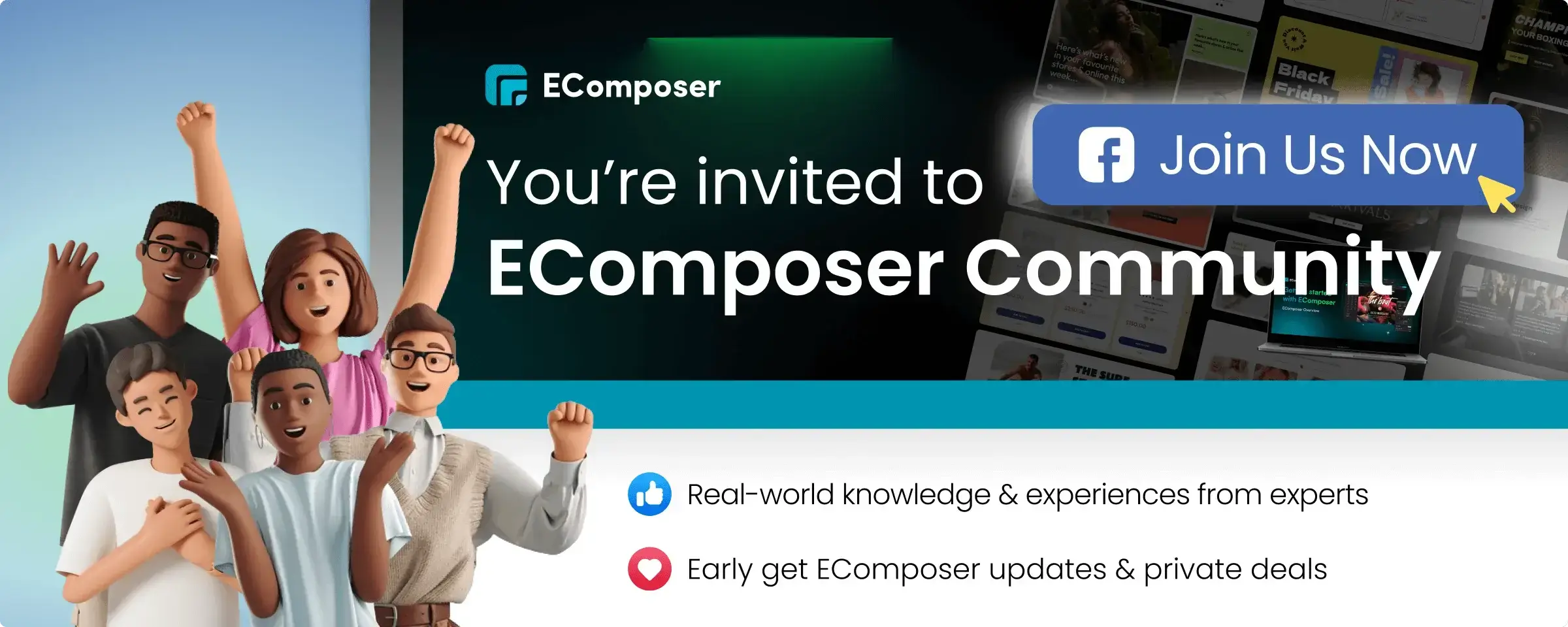





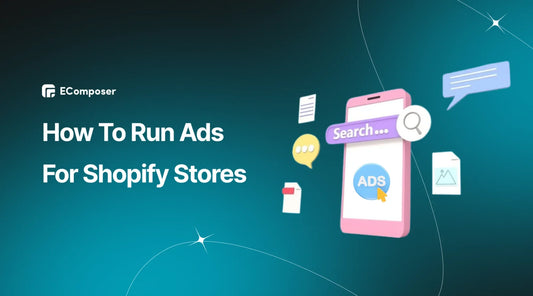
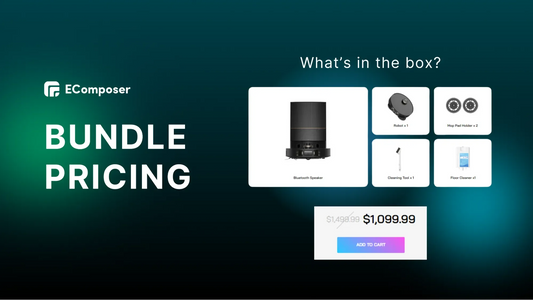
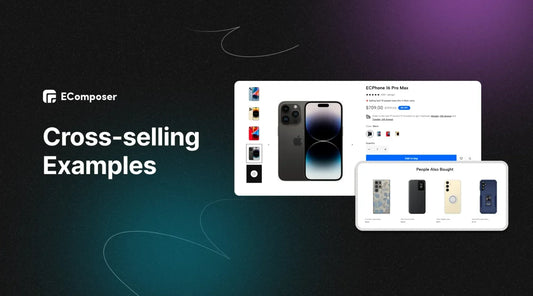
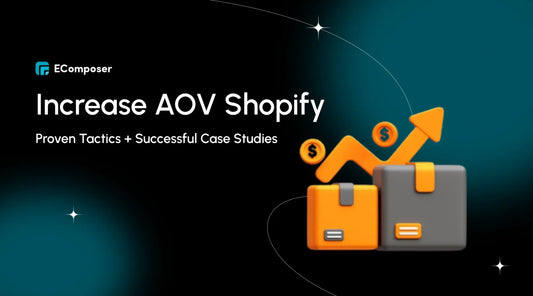
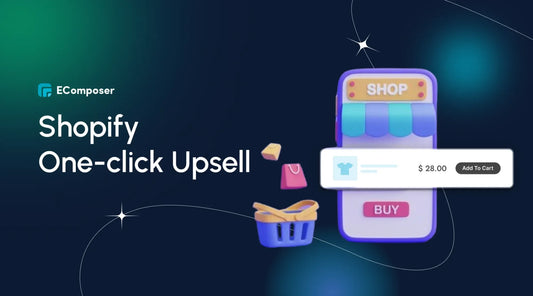
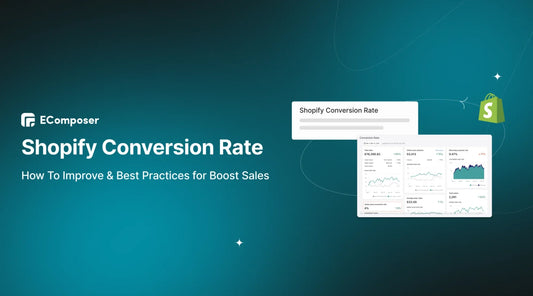







0 comments